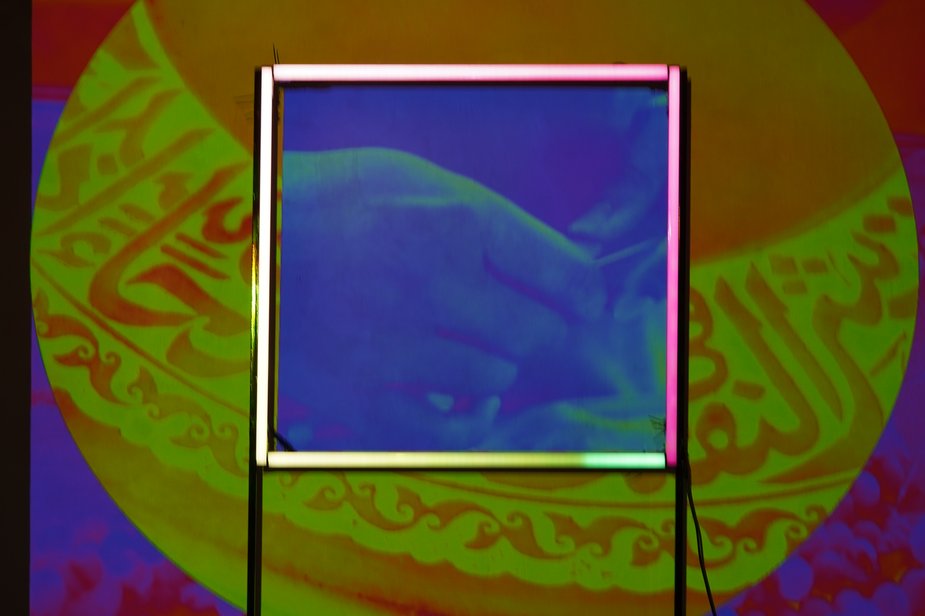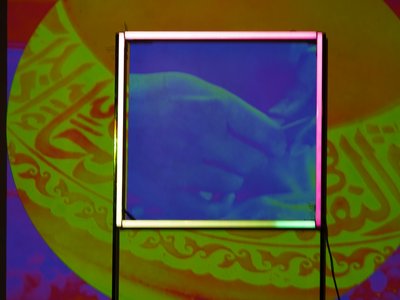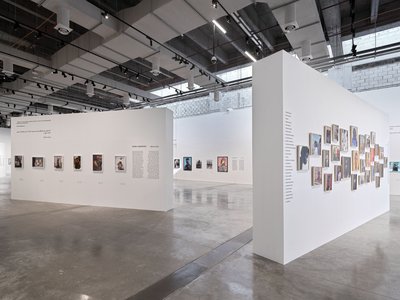Maryam Hassan Al-Thani:
Tell us about your photographic and mage making practice – how you got to where you are today and the way you use images in your practice.
Hadeer Omar:
I graduated with a graphic design degree which means by default I was working with imagery and creating imagery using photography. It was how I could communicate easily – through the use of images. For my photography practice I think, the department when I was in school pushed us to use the camera to observe and see beyond what we were looking at – 'seeing' not 'looking'. Photography was a way of composing and framing and the camera helped me at the beginning to do this. I tend to forget a lot and it helps me remember that I was in those places. That is how I connect the dots in my life or other people's lives. It is also a nice icebreaker. For me, that is how I start talking to people. Without a camera, you can’t just go up to people and be like, ‘Hi, my name is Hadeer’, the camera gives me confidence, it gives me that push. These are a couple of reasons of why and how I photograph. When it comes to moving images, it is when things start becoming more fun for me because I’m adding the component of time, of duration.
In terms of my interests and how they helped me develop my practice, there were a couple of themes and topics that I was very interested in. For example, my own history and heritage. I just started digging into my own identity and broke it down to many things like being a girl, being in a region, travelling and getting to know myself. I was raised in Egypt and now I am in Qatar, which also has affected my identity. I get really excited about cultures in general and I link it back to questions of identity, creating your own culture and how we can hack, decode and understand other cultures. Feminism is another element, in a subtle way, and as a female maker I deal with the expectation that I will make 'pretty stuff'. I had to search for what exactly I want to produce, not just for myself but for an audience. This led me to work on the conceptual aspects, such as the themes, techniques and visual language that I am interested in. I tested a lot of things – landscape, portraiture, street photography, abstraction and conceptual work. I am interested in all of those concepts and used them to develop my photography and film. More recently, immersive experiences started to excite me and I wanted to design my own immersive experience that translates an image in different ways. I started combining film, photography, VR, AR, mapping – whatever I can do to translate the idea that drives me. If the idea needs a photograph, I’ll do it, but I usually observe life around me in general with photographs.
Maryam Hassan Al-Thani:
In the context of the digital era that we live in, how do you choose what to explore and how do you choose the form of images? How does that work in your practice of creating immersive experiences?
Hadeer Omar:
A lot of people have started to shift to social media, digital platforms and virtual space to exhibit their work, especially within the current pandemic. But I have been working on these platforms for a while and, for me, my work does not just or only have to be exhibited in a gallery to exist or become known. I feel like you can do it all – I recently joined Tik Tok and thought through what this platform does with and for my work – learning how different it is to produce work for Tik Tok rather than Instagram. It is a very different set of possibilities compared to producing work for an exhibition or preparing a project for students in a classroom. It really is about picking the right format or changing the way a message or story is communicated. For me, even if you are posting on Instagram, it is different from posting an IG Story, and it is completely different to what you can do live on IGTV. I took it upon myself to produce something everyday to post on social media and create content – I sometimes get stuck on something and explore a bit further to create a bigger project for an exhibition. My exhibition at Doha’s Fire Station was my compilation of all the content I had made throughout the years that I found had similarities in their look and feel and were very personal to me, and my own footage shot in specific times. And I can recycle all this content later for another project that is saying something completely different. For me, I always make content and add it to my library constantly, while I am making the content I start curating based on what is happening around me. I don’t just react to things on the spot all the time. It helps me not be stuck when I am hit with a new proposal or a new exhibition because I can look back at the ideas and content I jotted down through time.
Maryam Hassan Al-Thani:
You touched upon something quite interesting which is this time element, you use time in many different ways which brings us to your installation Contemporary Heritage: And Thereafter, and the elements of time in image-making, and the meaning of recent and live time being added into a historic place like Al Koot Fort – a heritage site that has a deep history of its own. How does the time element in your work affect something like a site that actually has its own time equation?
Hadeer Omar:
Al Koot Fort is very special and, at the same time, we can all relate to common stories that such a place shares with us. It is a historical place that has many stories that you breakdown into people, time, space elements that can become super-relatable. I start with my own experience of a place first – how do I react to that place? How do I react to the time it embodies? How do I react to this experiment that I am making? Once I break down those elements, I create a mind map of information regarding people who have or now inhabit a space, and relatable stories – or I take a completely different direction and create a new meaning by putting elements together. Basically, the art is held in that reaction to Al Koot Fort and not just looking at its history. Analysing the information that can be gathered, and responding to it is one of the most essential mechanisms for an artist. The space has its own story, and what we are bringing is both an animation and an introduction into the space for an audience.


